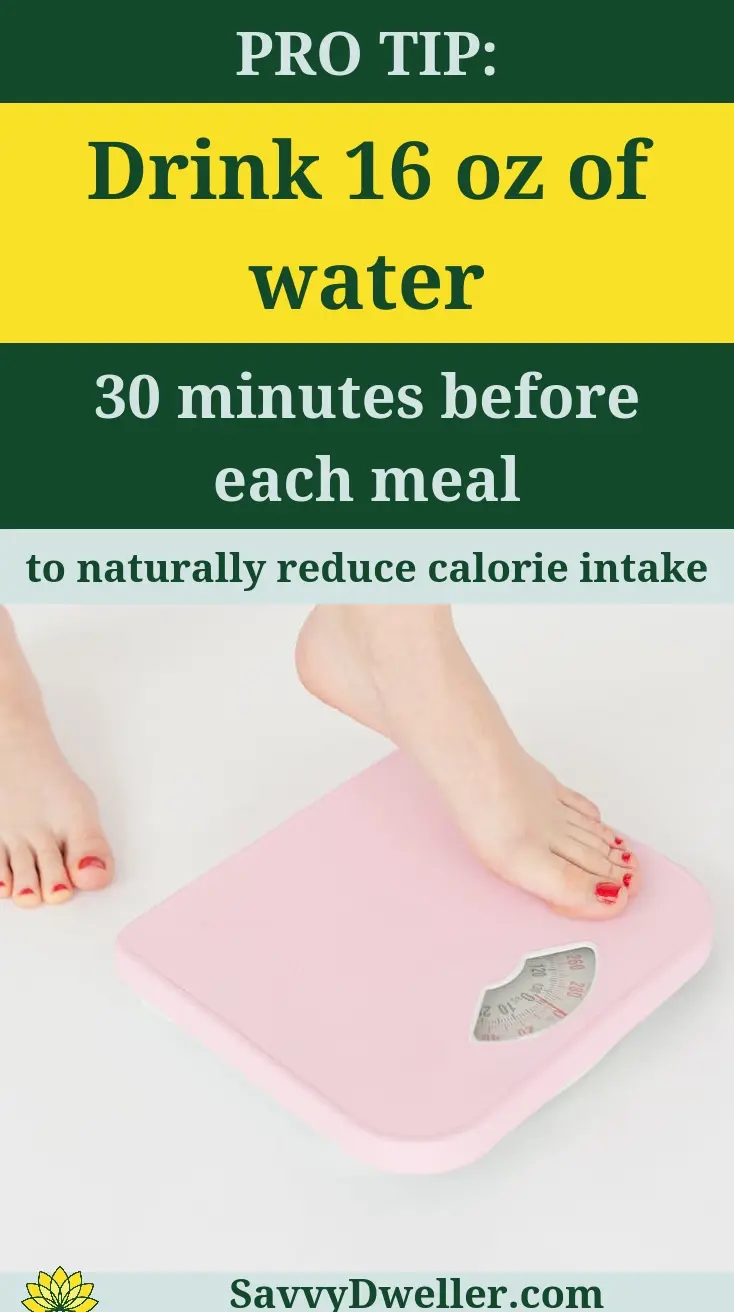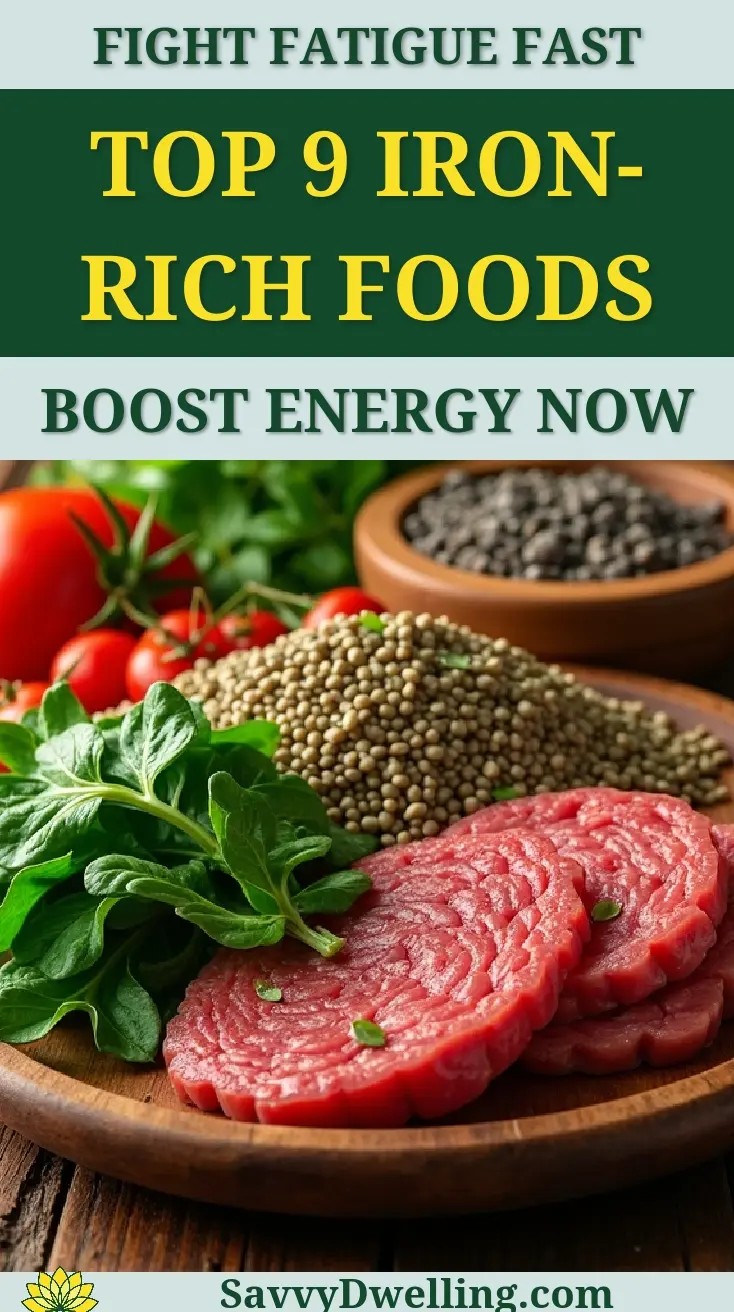The Ultimate Guide to Losing 50 Pounds Safely and Sustainably
Carrying an extra 50 pounds can feel overwhelming, leaving you exhausted after simple tasks and wondering if you’ll ever feel comfortable in your own body again. You’re not alone in this struggle, and the good news is that significant, lasting weight loss is absolutely achievable when approached with the right strategy.
This comprehensive guide will walk you through a medically-sound, step-by-step approach that prioritizes your safety while supporting sustainable results. We’ve researched and synthesized the most effective methods from nutrition science and exercise physiology, then simplified them into practical actions you can implement at home. You’ll discover how to create lasting changes that support not just weight loss, but improved energy, mobility, and overall health for years to come.
Contents
- At a Glance: The Best Solutions
- The Science Made Simple: Why Losing 50 Pounds Requires a Strategic Approach
- 1. Get Medical Clearance and Safety Assessment
- 2. Design Your Nutrition Strategy for 50-pound Weight Loss
- 3. Establish Your Home-based Exercise Program
- 4. Monitor Your Progress Beyond the Scale
- 5. Build Lasting Behavioral Changes
- 6. Set Realistic Timeline Expectations
- 7. Navigate Challenges and Maintain Long-term Success
- Common Mistakes to Avoid During Your 50-pound Weight Loss Journey
- Frequently Asked Questions
- Final Words
At a Glance: The Best Solutions
| Strategy | Timeline | Key Focus | Safety Level |
|---|---|---|---|
| Medical Clearance First | 1-2 weeks | Professional assessment | Essential |
| Gradual Calorie Reduction | Ongoing | 500-750 calorie daily deficit | High |
| Home-Based Exercise | Daily | Low-impact movement | High |
| Progress Monitoring | Weekly | Multiple health metrics | High |
| Behavioral Changes | 6-12 months | Sustainable habits | High |
This table is your roadmap for how to lose 50 pounds without risking your health or falling for flashy, unsustainable promises. It reflects a balanced blend of medical safety, steady nutrition shifts, accessible movement, consistent tracking, and long-term mindset work-exactly what’s needed for losing fifty pounds in a way that lasts.Each strategy is designed to fit into real life, not disrupt it. You don’t need a gym membership, expensive shakes, or extreme fasting to lose 50 pounds. What you do need is consistency, clarity, and a plan that respects your body’s limits and strengths.If you’re wondering how can I lose 50 pounds while managing a busy schedule or chronic health concerns, this framework meets you where you are. It’s not about the fast way to lose 50 pounds-it’s about the right way. For example, a 500–750 calorie daily deficit typically leads to 1–1.5 pounds of weight loss per week. At that pace, losing 50 pounds safely takes about 6–12 months-a realistic and healthy timeline that avoids the muscle loss, nutrient deficiencies, and rebound weight gain common with crash diets.And while “losing 50 pounds fast” might sound appealing, rapid loss often means losing water and muscle, not fat. Sustainable fat loss protects your metabolism and builds habits you’ll keep long after you hit your goal. These solutions work together: medical clearance keeps you safe, calorie reduction creates the deficit, home-based movement builds strength without strain, weekly monitoring catches issues early, and behavioral changes lock in your success. This is the core of the ultimate guide to losing 50 pounds-not a shortcut, but a supported, step-by-step path that honors your health every step of the way.
The Science Made Simple: Why Losing 50 Pounds Requires a Strategic Approach
Understanding Your Body’s Weight Loss Response
When you begin losing 50 pounds, your body doesn’t just shed fat-it adapts. Hormones like leptin and ghrelin shift, affecting hunger and fullness cues. This natural response can make consistent progress feel harder over time, not because you’re failing, but because your biology is working to maintain balance.
Losing fifty pounds safely means working with your body’s signals, not against them. Expecting linear results can lead to frustration; instead, prepare for fluctuations and plateaus as part of the process.
The Role Of Metabolism in Sustainable Weight Loss
Your metabolism-the rate at which your body burns calories at rest-is influenced by age, muscle mass, sex, and genetics. As you lose weight, your resting metabolic rate often slows slightly because a smaller body needs less energy to function.
To counter this, prioritize protein intake and resistance training to preserve lean muscle. When you lose 50 pounds without protecting muscle, your metabolism may drop more than necessary, making long-term maintenance harder.
Why Quick Fixes Don’t Support Long-term Success
Fad diets or extreme calorie cuts might promise a fast way to lose 50 pounds, but they rarely lead to lasting change. Rapid weight loss often results in muscle loss, nutrient deficiencies, and rebound weight gain.
True success in how to lose fifty pounds comes from gradual, consistent habits your body and lifestyle can sustain. Losing 50 lbs fast might sound appealing, but sustainable change protects your health and keeps the weight off for good.

1. Get Medical Clearance and Safety Assessment
Essential Health Screenings Before You Begin
Before starting your journey to lose 50 pounds, a thorough health evaluation ensures your plan supports-not strains-your body.
Cardiovascular Health Assessment
Your heart works harder during physical activity, especially if you’re new to exercise. A basic assessment may include blood pressure checks, cholesterol screening, and an EKG if recommended by your provider.
Joint and Mobility Evaluation
Carrying extra weight puts stress on knees, hips, and ankles. A physical therapist or doctor can evaluate your range of motion and suggest safe movement patterns to prevent injury while you’re losing 50 pounds.
Chronic Condition Considerations
If you manage conditions like diabetes, hypertension, or thyroid disorders, weight loss can improve them—but may also require medication adjustments. Discuss your goals with your care team to align your plan with your health needs. Following a DASH diet meal plan can effectively help lower blood pressure, offering delicious options that fit within your health goals.
Creating Your Personal Safety Profile
Home Exercise Safety Checklist
- Clear a non-slip space large enough for movement
- Keep water nearby to stay hydrated
- Use supportive footwear, even indoors
- Have a sturdy chair or wall within reach for balance
- Avoid exercising during peak heat or when feeling dizzy
Medication Interactions to Discuss
Some medications affect appetite, fluid retention, or energy levels. Before you begin your guide to losing 50 pounds, ask your doctor: “Could my current medications impact my weight loss efforts or safety during exercise?”
Also See: A Guide to the Health Benefits Of Different Types Of Tea
2. Design Your Nutrition Strategy for 50-pound Weight Loss
Creating a Sustainable Calorie Deficit
Losing 50 pounds requires a consistent calorie deficit, but not starvation. Aim for a daily reduction of 500–750 calories to lose about 1–1.5 pounds per week-a pace that supports fat loss while preserving muscle and energy.
Daily Calorie Calculations for Safe Weight Loss
- Calculate your Total Daily Energy Expenditure (TDEE) using an online calculator that includes age, sex, height, weight, and activity level.
- Subtract 500–750 calories from that number to get your target intake.
- Never eat below 1,200 calories per day without medical supervision.
- Reassess every 10–15 pounds lost, as your TDEE decreases with weight.
Macronutrient Balance for Optimal Health
Focus on a balanced mix: 40–50% of calories from complex carbs (like vegetables and whole grains), 25–35% from lean protein, and 20–30% from healthy fats. This balance helps stabilize blood sugar, curb cravings, and maintain energy while you lose fifty pounds.
Meal Planning and Preparation Systems
Weekly Meal Prep Strategies
- Plan 3–4 core meals that rotate throughout the week to reduce decision fatigue.
- Cook proteins and grains in bulk on weekends (e.g., grilled chicken, quinoa, roasted veggies).
- Portion meals into containers for grab-and-go ease.
- Keep healthy snacks prepped (like hard-boiled eggs or sliced apples with nut butter).
Portion Control Techniques
- Use smaller plates (9-inch diameter) to naturally reduce serving size
- Measure high-calorie foods (oils, nuts, dressings) with spoons or scales
- Fill half your plate with non-starchy vegetables first
- Eat slowly and stop when you’re 80% full
Adaptive Nutrition for Special Dietary Needs
Managing Diabetes During Weight Loss
If you have type 2 diabetes, losing 50 pounds can significantly improve blood sugar control. Work with your healthcare team to adjust carb intake and monitor glucose closely. Focus on high-fiber carbs, lean protein, and consistent meal timing to avoid spikes and crashes. Incorporating the best foods that help keep blood sugar stable is essential for effective management. Foods like whole grains, non-starchy vegetables, and healthy fats can be particularly beneficial.
Heart-Healthy Weight Loss Approaches
For those with or at risk for heart disease, emphasize unsaturated fats (avocado, olive oil, fatty fish), limit sodium to under 2,300 mg daily, and choose whole foods over processed options. This approach supports both losing fifty pounds and strengthening cardiovascular health. Incorporating effective food swaps can make a significant difference on your weight loss journey. Simple changes, like replacing white rice with quinoa, can enhance your meals while aiding in weight management.
3. Establish Your Home-based Exercise Program
Low-impact Cardio Options for All Mobility Levels
When you’re working toward losing 50 pounds, low-impact cardio protects your joints while still burning calories effectively. The key is consistency-not intensity.
Chair-Based Exercise Routines
Chair workouts are ideal if you’re managing joint pain, recovering from injury, or just starting your fitness journey. You can do them safely in your living room with minimal space.
- Sit tall in a sturdy, armless chair with feet flat on the floor.
- March in place for 1–2 minutes to warm up.
- Perform seated leg extensions: extend one leg straight out, hold for 2 seconds, lower slowly. Do 10 reps per leg.
- Add seated arm circles or overhead reaches with light resistance (like soup cans or no weight at all).
- Finish with seated torso twists-5 reps per side.
Aim for 15–20 minutes, 4–5 days a week. As your strength and stamina improve, gradually increase duration or add light ankle/wrist weights.
Walking Programs and Progression
Walking is one of the most accessible ways to burn calories without stressing your body. It’s foundational for anyone asking, “how can I lose 50 pounds?”
- Start with 10 minutes a day at a comfortable pace.
- Add 2–3 minutes every 3–4 days until you reach 30–45 minutes.
- Once consistent, introduce slight inclines (like walking uphill or using stairs) or boost your pace for short intervals.
- Track steps with a simple pedometer or phone app-aim for 7,000–10,000 steps daily over time.
Even 20 minutes of daily walking supports fat loss and improves mood-no gym required.
Home Equipment Options on Any Budget
- Zero-cost: Chair, stairs, hallway for walking laps.
- Under $20: Jump rope (for higher mobility), resistance bands, yoga mat.
- $50–$100: Adjustable dumbbells, foldable step platform, balance pad.
- Smart splurge: Refurbished recumbent bike or under-desk pedal exerciser for seated cardio.
You don’t need fancy gear to lose fifty pounds. Consistency with basic tools often yields better long-term results than expensive, underused equipment.
Strength Training for Sustainable Weight Loss
Muscle burns more calories at rest than fat. Including strength work helps you lose 50 pounds while preserving lean mass-critical for maintaining metabolism during weight loss.
Bodyweight Exercises for Beginners
- Wall push-ups: Stand facing a wall, place hands shoulder-width apart, and perform 10–15 slow reps.
- Seated or standing glute bridges: Lie on your back (or sit tall) and lift hips while squeezing your glutes-10 reps.
- Standing calf raises: Hold a countertop for balance, rise onto toes, lower slowly-15 reps.
- Modified planks: Rest on knees and forearms, keep back straight-hold 15–30 seconds.
Do this circuit 2–3 times weekly. Rest 60 seconds between exercises.
Resistance Band Workouts
Resistance bands are portable, joint-friendly, and scalable for all strength levels-perfect for home-based losing fifty pounds efforts.
- Band rows: Anchor band to a doorknob, pull toward your ribs-12 reps.
- Banded squats: Step on band with feet shoulder-width apart, hold ends at shoulders-10–15 reps.
- Overhead press: Stand on band, press handles overhead-10 reps.
- Glute kickbacks: Loop band around ankles, kick one leg back-12 per side.
Choose light-to-medium resistance initially. Focus on form over speed.
Fall Prevention and Exercise Safety
Safety isn’t optional-it’s part of your success strategy when you’re aiming to lose 50 pounds in 4 months or any realistic timeframe.
Home Environment Setup
- Clear walking paths of rugs, cords, and clutter.
- Use non-slip mats under exercise equipment or during floor work.
- Ensure adequate lighting-especially near stairs or doorways.
- Keep a stable chair or countertop within reach for balance support.
A safe space lets you move with confidence, not caution.
Balance and Stability Training
- Stand on one foot while brushing your teeth (hold sink if needed)-30 seconds per leg.
- Heel-to-toe walk down a hallway-10 steps forward, 10 back.
- Seated marches with eyes closed (only if safe and stable)-1 minute.
- Add light arm movements during standing balance to challenge coordination.
Do balance exercises 3–5 times weekly. Improved stability reduces injury risk and supports daily mobility-key for long-term weight maintenance.

4. Monitor Your Progress Beyond the Scale
Comprehensive Health Tracking Methods
When your goal is to lose fifty pounds fast (or sustainably), the scale tells just one part of the story. Track these metrics weekly for a fuller picture.
Weight Measurement Best Practices
- Weigh yourself once a week-same day, same time (e.g., Friday morning).
- Use the same scale on a hard, flat surface.
- Wear similar clothing (or none) each time.
- Record the number in a journal or app-but don’t obsess over daily fluctuations.
Water retention, hormones, and food volume can shift the scale by 3–5 pounds in a day-focus on weekly trends, not daily numbers.
Body Measurements and Progress Photos
- Measure chest, waist, hips, and thighs every 2–4 weeks.
- Take front, side, and back photos in consistent lighting and clothing.
- Use a soft tape measure-not too tight, not too loose.
Sometimes inches disappear before pounds do-especially when building muscle. These visuals reinforce progress when motivation dips.
Energy Levels and Sleep Quality
Track daily energy and sleep in a simple log:
- Rate morning energy (1–5 scale).
- Note hours of uninterrupted sleep.
- Record afternoon slumps or evening fatigue.
Improved sleep and sustained energy often appear before major weight loss-powerful signs your plan is working.
Vital Sign Monitoring for Safety
Especially if you have underlying health conditions, tracking vitals ensures your guide to losing 50 pounds stays safe.
Blood Pressure Tracking
- Use a validated home blood pressure monitor.
- Check at the same time daily-preferably morning, before caffeine or exercise.
- Sit quietly for 5 minutes before measuring.
- Log readings weekly and share trends with your doctor.
Weight loss often lowers blood pressure naturally-but sudden drops or spikes warrant medical attention.
Heart Rate During Exercise
- Find your target heart rate zone: 50–70% of your max (roughly 220 minus your age).
- Use a fitness tracker or manual pulse check (count beats for 15 seconds × 4).
- Stay in the “moderate” zone: you can talk but not sing.
If you feel dizzy, short of breath, or chest pressure, stop immediately and consult a healthcare provider.
Recognizing Positive Changes
Celebrating wins-big and small-fuels long-term commitment to how to lose 50 pounds.
Non-Scale Victories to Celebrate
- Walking up stairs without getting winded.
- Fitting into old clothes or buying a smaller size.
- Reduced medication doses (with doctor approval).
- Choosing water over soda without thinking twice.
- Completing a full week of workouts.
These milestones reflect real health improvements-far beyond a number on a scale.
Improved Mobility and Function
- Bending to tie shoes without pain.
- Carrying groceries without losing your breath.
- Playing with kids or pets without fatigue.
- Getting up from a chair without using your hands.
When daily movements become easier, you know your body is transforming. That’s the essence of how do I lose 50 pounds and keep it off-function over form.
5. Build Lasting Behavioral Changes
Habit Formation Strategies for Weight Loss
To lose 50 pounds and never regain it, you must rewire routines-not just restrict calories.
The 21-Day Habit Building Approach
- Pick one small behavior: e.g., “Drink 16 oz water before breakfast.”
- Do it at the same time every day for 21 days straight.
- Track it with a checkmark on a calendar-don’t break the chain.
- After 21 days, add a second habit only if the first feels automatic.
Small, consistent actions compound into lifelong change-this is the core of the ultimate guide to losing 50 pounds.
Environmental Modifications at Home
- Store fruits and pre-cut veggies at eye level in the fridge.
- Keep sugary snacks out of the house-or in opaque containers on high shelves.
- Use smaller plates (9-inch) for meals to naturally reduce portions.
- Designate a workout corner with mat and bands visible as a visual cue.
Your environment shapes your choices more than willpower ever can.
Managing Emotional Eating and Stress
Stress and boredom are common barriers when figuring out how lose 50 pounds. Address them proactively.
Mindful Eating Techniques
- Eat without screens-just you and your food.
- Put your fork down between bites.
- Chew each bite 20–30 times.
- Pause halfway through your meal and ask: “Am I still hungry or just eating?”
Mindful eating helps you recognize true hunger-and stop before you’re stuffed.
Stress Reduction Methods
- 5-minute deep breathing: inhale 4 sec, hold 4, exhale 6.
- 10-minute walk outside-no phone, just observation.
- Write down worries in a journal, then tear the page up (symbolic release).
- Listen to calming music or nature sounds during rest.
Lower stress means fewer cortisol-driven cravings and better sleep-both critical for fat loss.
Creating Support Systems
You don’t have to do this alone. Support turns intention into action.
Family and Caregiver Involvement
- Share your goals clearly: “I’m working on losing 50 lbs fast in a healthy way-can you help by not offering dessert?”
- Invite them to join walks or meal prep.
- Ask for specific help: “Please keep soda out of the fridge.”
- Celebrate non-food wins together (e.g., a movie night after a workout streak).
Even small acts of support reduce temptation and increase accountability.
Professional Support Options
- Registered Dietitian (RD): For personalized nutrition plans, especially with diabetes or heart conditions.
- Certified Health Coach: For motivation, habit tracking, and behavioral strategies.
- Physical Therapist: If mobility issues limit exercise options.
- Telehealth Services: Many offer affordable virtual check-ins for ongoing guidance.
Asking for help isn’t weakness-it’s wisdom. Professional input can make the difference between plateauing and progressing in your journey to losing 50 pounds.
6. Set Realistic Timeline Expectations
Safe Weight Loss Rates and Milestones
Losing 50 pounds is a significant goal, and expecting it to happen overnight sets you up for frustration. A safe, sustainable rate is typically 1 to 2 pounds per week. At this pace, you’re more likely to preserve muscle, support metabolism, and build habits that last.
Remember, your journey is personal-some weeks may show faster results, while others stall. That’s normal and doesn’t mean you’re failing.
Monthly and Quarterly Goal Setting
Instead of fixating on the full 50-pound mark, break your journey into manageable milestones. Monthly goals (4–8 pounds) and quarterly check-ins (12–24 pounds) give you short-term wins while moving steadily toward your larger aim.
- Start each month by setting one nutrition goal (e.g., cooking at home 5 nights a week) and one movement goal (e.g., walking 150 minutes weekly).
- Track non-scale progress like improved sleep, looser clothing, or more energy-these often appear before major weight shifts.
- Review every 12 weeks to assess what’s working and what needs tweaking, based on your energy, mood, and measurements.
Adjusting Expectations for Plateaus
Plateaus are a natural part of losing fifty pounds-they don’t mean your efforts are wasted. As your body gets smaller, it burns fewer calories, so the same routine may no longer create a deficit.
Adjust by reassessing your calorie needs, mixing up your workouts, or focusing on strength training to boost metabolism. Patience here builds resilience, not failure.
Celebrating Progress Along the Journey
Recognizing effort-not just outcomes-keeps motivation alive during the long haul of how to lose 50 pounds. Celebration reinforces positive behavior and reminds you why you started.
Milestone Reward Systems
Reward yourself for hitting targets, but choose non-food incentives that support your health journey:
- New workout gear after losing 10 pounds
- A massage or spa day at the 25-pound mark
- A weekend getaway when you hit 40 pounds lost
- A journal or fitness tracker for consistent weekly check-ins
Avoid using food as a reward-it can blur the line between emotional and physical hunger.
Maintaining Motivation Through Challenges
On tough days, reconnect with your “why.” Was it to play with your grandkids without getting winded? To reduce joint pain? To feel confident in your skin?
Keep a small notebook or phone note listing your core reasons. Revisit it when energy dips or temptations rise. Small, consistent actions-even on hard days-build unstoppable momentum over time.
Overcoming Weight Loss Plateaus
When the scale stops moving despite your efforts, it’s not a sign to quit-it’s a signal to recalibrate. Plateaus often occur around the 20- to 30-pound mark in a 50-pound journey due to metabolic adaptation.
When to Adjust Your Approach
- Re-calculate your calorie needs-your maintenance level drops as you lose weight.
- Change your exercise routine-add intervals, increase resistance, or try a new activity like swimming or dance.
- Review sleep and stress-high cortisol can slow fat loss, even with perfect eating.
- Check hydration and fiber intake-both affect digestion and water retention, which can mask fat loss.
Professional Guidance for Stubborn Weight
If you’ve made consistent lifestyle changes for 8–12 weeks with no movement, consult a registered dietitian or your doctor. They can check for underlying issues like thyroid imbalances, insulin resistance, or medication side effects that impact how you lose weight.
Professional support isn’t a last resort-it’s a smart strategy for sustainable results.
Managing Setbacks and Relapses
Skipping workouts, overeating during holidays, or stressful life events can derail progress-but they don’t erase it. The key is response, not perfection.
Getting Back on Track Strategies
- Reset with a “next meal” mindset-don’t wait for Monday or the new year. Make your very next choice aligned with your goal.
- Revisit your meal prep system-re-stock healthy staples to reduce decision fatigue.
- Do a 10-minute movement reset-a short walk or stretch session rebuilds momentum and mood.
- Journal what triggered the slip-patterns reveal where you need better support or boundaries.
Learning from Temporary Setbacks
Every lapse is data, not defeat. Ask yourself: Was I overly restrictive? Did I ignore hunger cues? Was I managing stress with food? Use these insights to strengthen your plan.
People who successfully lose 50 pounds and keep it off aren’t perfect-they’re persistent and adaptive.
Transitioning to Weight Maintenance
Reaching your goal weight is a huge win-but the real victory is keeping it off. Maintenance isn’t passive; it’s an active phase with its own strategies.
Adjusting Calorie Intake for Maintenance
Your body now needs more calories than during weight loss-but fewer than before you started. Use an online TDEE calculator to estimate your new maintenance level, then adjust based on weekly weigh-ins.
- Start by adding 200–300 calories daily from nutrient-dense foods (e.g., nuts, whole grains, lean protein).
- Monitor weight for 2–3 weeks. If it’s stable, you’ve found your range.
- If weight creeps up, reduce slightly; if it drops, add a bit more.
Continuing Exercise for Health Benefits
Keep moving-not just for weight control, but for heart health, bone density, mood, and longevity. Shift your focus from “burning calories” to “feeling strong.”
Aim for 150–300 minutes of moderate activity weekly, plus 2 days of strength training. This supports metabolism and makes daily life easier long after you’ve learned how to lose 50 pounds.
Common Mistakes to Avoid During Your 50-pound Weight Loss Journey
Unrealistic Timeline Expectations
Wanting to lose fifty pounds fast-like in 2 months-often leads to extreme measures that backfire. Rapid loss usually includes muscle and water, not just fat, and increases rebound risk. Stick to 1–2 pounds per week for lasting change.
Extreme Calorie Restriction
Eating under 1,200 calories daily (or your doctor-recommended minimum) slows metabolism, causes fatigue, and triggers intense cravings. Sustainable fat loss comes from a modest deficit, not starvation. Incorporating metabolism-boosting foods can make a significant difference in weight loss efforts. Including ingredients that enhance metabolic function helps support your body while working towards your weight loss goals.
Ignoring Medical Conditions
Conditions like PCOS, hypothyroidism, or insulin resistance can make losing 50 pounds harder without tailored strategies. Always disclose your full health history to your care team before starting. Incorporating lifestyle changes can also help in reversing insulin resistance naturally. Focusing on diet and regular physical activity is key to improving insulin sensitivity and promoting overall health.
Focusing Only on the Scale
The scale doesn’t reflect muscle gain, water shifts, or improved health markers. Relying on it alone can make you quit when you’re actually succeeding. Track energy, clothing fit, and lab results too.
Attempting Unsustainable Exercise Programs
Jumping into two-hour daily workouts or high-intensity regimens you hate won’t last. Choose movement you enjoy and can do consistently-even 20 minutes most days adds up over time.
Neglecting Professional Support When Needed
You don’t have to figure out how can I lose 50 pounds alone. Dietitians, therapists, and doctors exist to guide you safely. Seeking help isn’t weakness-it’s wisdom, especially for a goal as significant as losing 50 lbs fast might tempt you to pursue unsafely.

Frequently Asked Questions
How Can I Manage Feelings Of Hunger When Reducing My Calorie Intake?
To manage hunger, focus on increasing your fiber and protein intake with foods like vegetables, legumes, and lean meats, as they promote satiety. Spread your meals throughout the day with smaller, balanced portions to avoid long gaps that trigger hunger. Additionally, stay hydrated by drinking water before meals, as thirst is often mistaken for hunger, and ensure you’re not cutting calories too drastically, which can backfire.
What Are the Signs That I Might Be Losing Weight Too Quickly?
Rapid weight loss exceeding 1-2 pounds per week can be unsafe. Watch for persistent fatigue, dizziness, or irritability, which may indicate inadequate nutrition. Other red flags include hair loss, muscle weakness, or frequent illness, suggesting your body isn’t getting essential nutrients. If you experience these, consult a healthcare professional to adjust your plan and prioritize a gradual approach.
Can I Effectively Build Muscle While Focusing on Fat Loss?
Yes, it’s possible with a balanced approach to nutrition and strength training. Ensure you consume adequate protein (aim for 0.7-1 gram per pound of body weight daily) to support muscle repair. Incorporate resistance exercises, like bodyweight workouts or band training, 2-3 times weekly, focusing on progressive overload. However, expect slower muscle gains in a calorie deficit, so prioritize fat loss first for sustainable results.
How Should I Approach Weight Loss During Social Events or Holidays?
Plan ahead by eating a healthy snack before events to avoid overindulging and scanning food options to choose nutrient-dense items first. Practice mindful eating by savoring small portions of treats without guilt, and balance indulgences with lighter meals before or after. Remember, one event won’t derail progress—focus on getting back to your routine the next day rather than restrictive补偿. Opting for low-calorie snacks can keep you satisfied while helping to manage your hunger. Discovering snacks that are both filling and low in calories can make a big difference in maintaining a healthy eating plan.
How Important is Hydration for Weight Loss, and How Much Water Should I Drink?
Hydration is crucial as it supports metabolism and helps control appetite. Aim for at least 8-10 cups (64-80 ounces) of water daily, adjusting for activity level and climate. Drinking water before meals can reduce calorie intake, and replacing sugary drinks with water cuts empty calories. Proper hydration plays a significant role in overall health and wellness. It also offers numerous benefits, such as improving digestion and boosting energy levels, making it vital to prioritize water consumption.
Final Words
Losing 50 pounds safely represents one of the most meaningful investments you can make in your long-term health and quality of life. The strategies we’ve outlined provide a comprehensive roadmap that prioritizes your safety while supporting sustainable weight loss over time. Remember, this journey isn’t about perfection-it’s about progress, consistency, and building habits that will serve you for years to come.
Your success depends on taking that crucial first step: getting medical clearance and creating a personalized plan that fits your unique circumstances. Whether you start with gentle chair exercises, modify your eating patterns gradually, or focus on tracking your daily progress, each small action compounds into remarkable results. The timeline may seem long, but sustainable weight loss protects your body from the metabolic damage that quick fixes often cause.
Ready to transform your health with confidence and safety? Start implementing these evidence-based strategies today, and remember to check out Savvy Dwelling for more practical wellness solutions that support your journey toward better health. Your future self will thank you for choosing the sustainable path-begin with just one strategy from this guide and build momentum from there.


